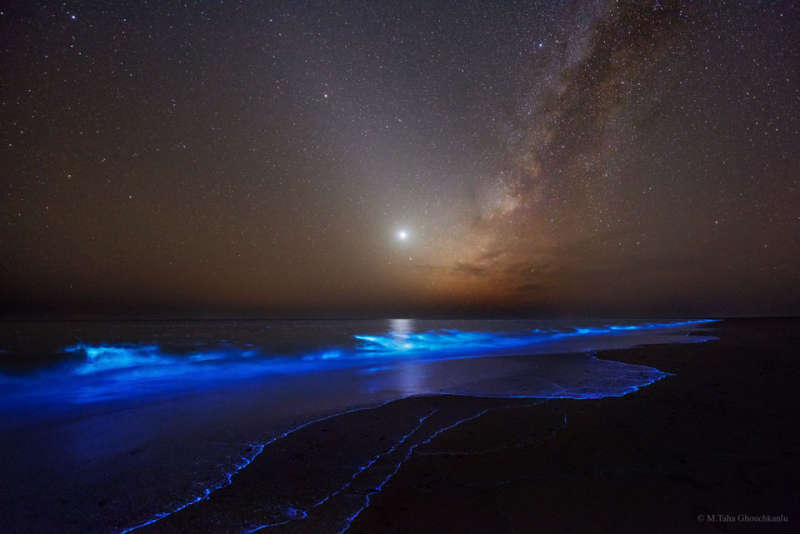Credit & Copyright: Taha Ghouchkanlu
Explanation:
What glows in the night?
This night, several unusual glows were evident -- some near, but some far.
The foreground surf glimmers blue with the light of
bioluminescent plankton.
Next out,
Earth's atmosphere dims the horizon and provides a few opaque clouds.
Further out, the
planet Venus
glows bright near the image center.
If you slightly avert your eyes,
a diagonal beam of light will stand out crossing behind Venus.
This band is
zodiacal light,
sunlight scattered by dust in our
Solar System.
Much further away are numerous single
bright stars, most closer than 100 light years away.
Furthest away, also rising diagonally and making a "V" with the
zodiacal light,
is the central band of our
Milky Way Galaxy.
Most of the billions of Milky Way stars and dark clouds are thousands of
light years away.
The featured image was taken last November on the Iranian coast of
Gulf of Oman.
1999 2000 2001 2002 2003 2004 2005 2006 2007 2008 2009 2010 2011 2012 2013 2014 2015 2016 2017 2018 2019 2020 2021 2022 2023 2024 2025 |
Yanvar' Fevral' Mart Aprel' Mai Iyun' Iyul' Avgust Sentyabr' Oktyabr' Noyabr' Dekabr' |
NASA Web Site Statements, Warnings, and Disclaimers
NASA Official: Jay Norris. Specific rights apply.
A service of: LHEA at NASA / GSFC
& Michigan Tech. U.
|
Publikacii s klyuchevymi slovami:
zodiacal light - Milky Way - zodiakal'nyi svet - Mlechnyi Put'
Publikacii so slovami: zodiacal light - Milky Way - zodiakal'nyi svet - Mlechnyi Put' | |
Sm. takzhe:
Vse publikacii na tu zhe temu >> | |
